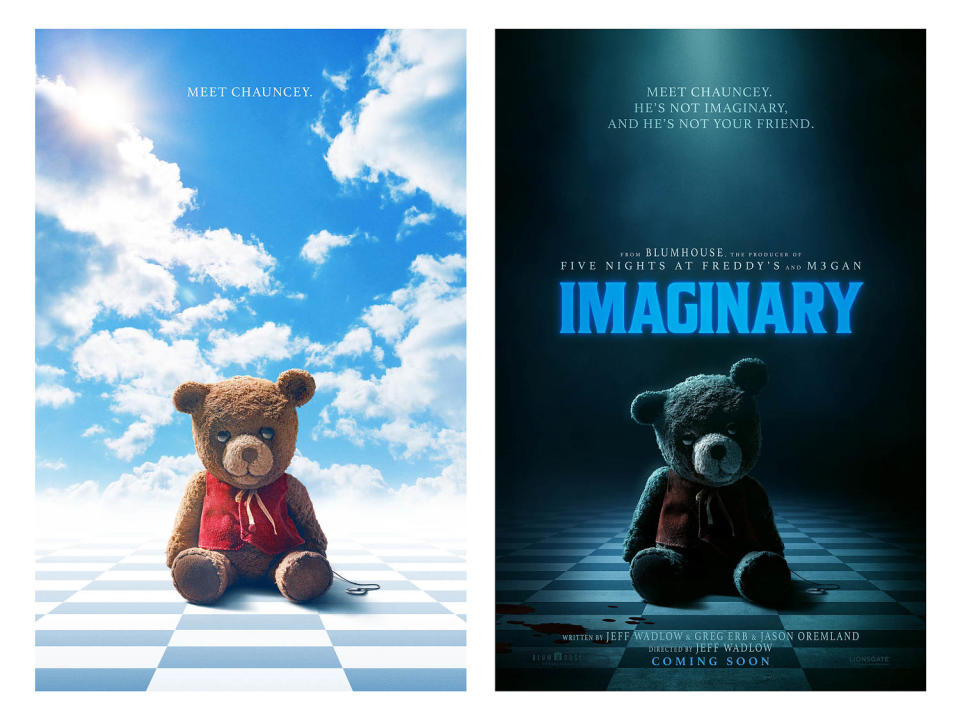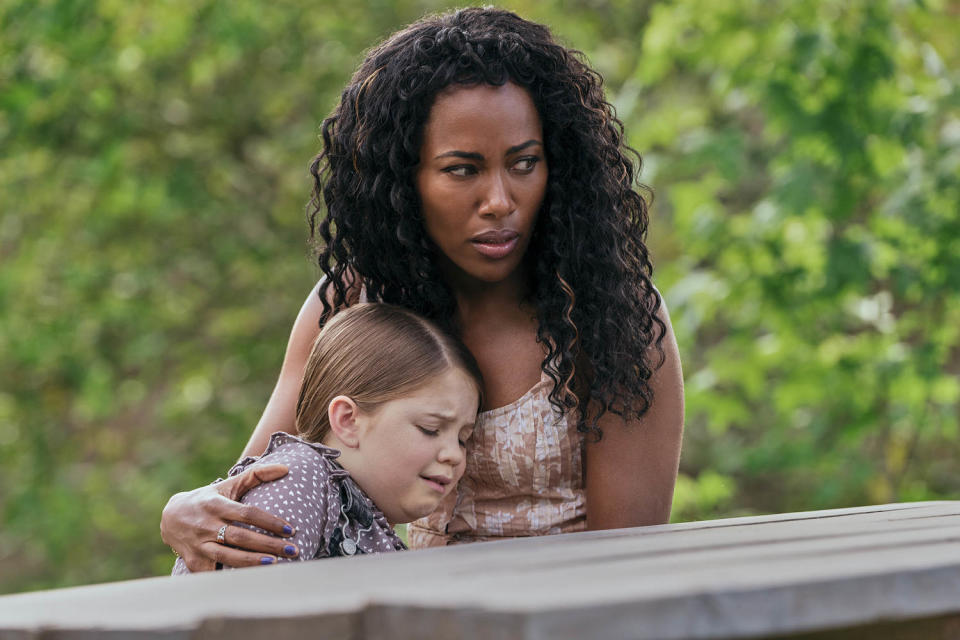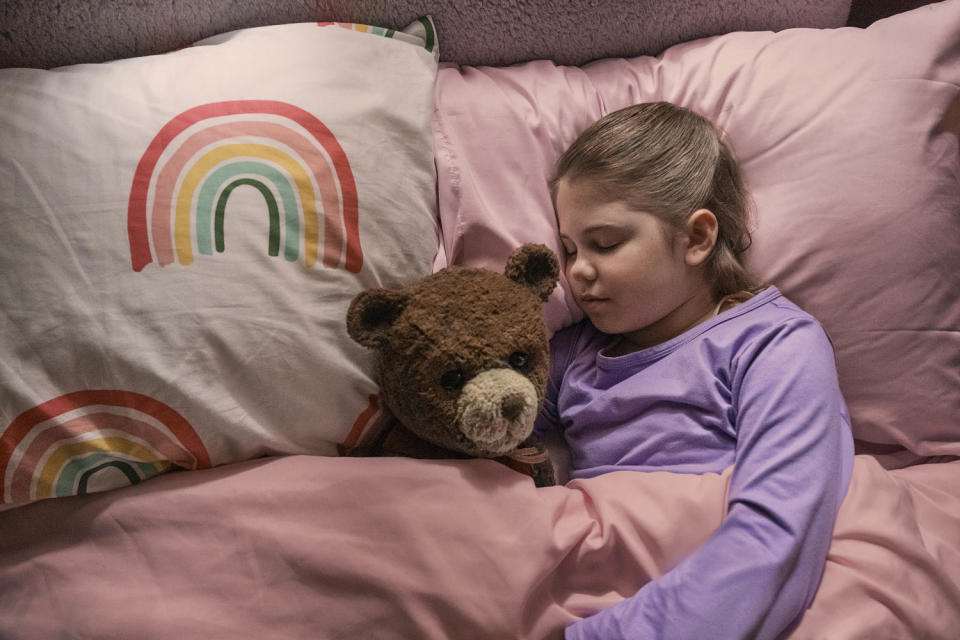'Imaginary' makes childhood scary. Its creators say it already is
- Oops!Something went wrong.Please try again later.
Demonic dolls, killer puppets and creepy clowns. If you’ve had nightmares about a childhood figure turned horrific, you’re probably not alone. These figures are at the center of several successful horror movies like “Child's Play” (1988), “Annabelle” (2014), “M3GAN" (2022) and even "Five Nights at Freddy's" (2024), about animatronic kids' entertainment.
But why are these staples of childhood — ones that we often associate with innocence — so often, and often so successfully, transformed into something sinister?
“Imaginary” is the latest horror movie to ask this very question, and its stars and creators gave us an answer.
After moving back into her childhood home with her family, Jessica’s (DeWanda Wise) 10-year-old stepdaughter Alice (Pyper Braun) develops a friendship with a teddy bear she finds in the basement whom she names Chauncey.
Their friendship, seemingly harmless at first, becomes disturbing once they begin a scavenger hunt centered around dangerous clues. When Jessica starts to investigate Alice’s questionable behavior, she realizes Chauncey is not just a simple teddy bear, but something much more threatening — and possibly connected to her own childhood.

The two are also bonded over their shared trauma. Alice is struggling with her mother’s absence in her life due to addiction and mental health issues. Jessica is no stranger to that sort of grief, having lost her mother early on in her childhood.
“It was that very pivotal age where they both experienced this unfathomable loss of a parent,” Wise tells TODAY.com.
Like her character Jessica, who catches on to Alice's games quickly, Wise believes that childhood isn’t always “happy or idyllic,” even if some pop culture sanitizes the experience.
“Imaginary” references “Inside Out,” the Pixar film that famously visualizes a child’s imagination. Naturally, the horror movie's version is much darker — and maybe more realistic, depending on who you ask.

“Imagination is such a fertile idea for a film,” director Jeff Wadlow says. “You can just do so much with it. You can have fun. You can go to very dark places because that’s where our imagination goes. This notion that kids’ fairy tales are so sweet and sanitized is really a modern idea. If you look at older fairy tales, they get quite dark and scary and weird in places.”
“Grimms’ Fairy Tales,” a German collection of fairy tales first published in 1812, features evil witches and brutal murders and merciless villains. It wasn’t until more recently that these stories were transformed into more kid-friendly retellings with happy endings seen in Disney movies like “Cinderella” and “Sleeping Beauty."
Jason Blum, CEO of horror movie powerhouse Blumhouse Productions and producer of “Imaginary,” says that as a child, his imagination often wandered into the darkness that “Imaginary” explores.

“I had many childhood fears. I had multiple imaginary friends,” Blum says. “I had a very vivid imagination and oftentimes, I would take such a journey that I would be frightened by it. I’ve always wanted to make a movie that would capture how real things seem to children.”
As Blum says, Alice’s imaginary friend isn’t so imaginary to viewers: Chauncey is real to us. His presence is undeniable. That’s what makes “Imaginary” so spooky — our perception of reality is altered, and we become children again. Chauncey not only talks and walks but demands and deceives. The cuteness of his teddy bear exterior is extinguished once we see what he’s capable of.
“I think when you make the familiar scary, it’s almost more haunting,” Blum says. “I think if we went with some wild design or some teddy bear you’d never seen before, it reminds you you’re in a movie. When you take objects that we’ve all had whether it’s a teddy bear or a doll and animate and make them scary, I think that just gets under your skin more.”
That's really what Annabelle, Chucky — and, now Chauncey — have in common: We know them, we trust them and we feel safe with them. So when the teddy bear that once comforted us turns his back on us, it feels wrong. Their betrayal is more off-putting than the villain we already know is evil, because we never had faith in them to begin with.
The reason "Imaginary", and movies like it, work boils down to that familiarity factor — we all know what it’s like to be a kid and be afraid. Braun puts it simply:
“I feel like everyone had to be scared of the dark once in their life,” the 10-year-old tells TODAY.com.
Chauncey is both the friend who comforted us, and the fears that came when the lights turned off. In “Imaginary,” that friend betrays us and those fears come true, and it all takes the form of a raggedy stuffed bear.
This article was originally published on TODAY.com

